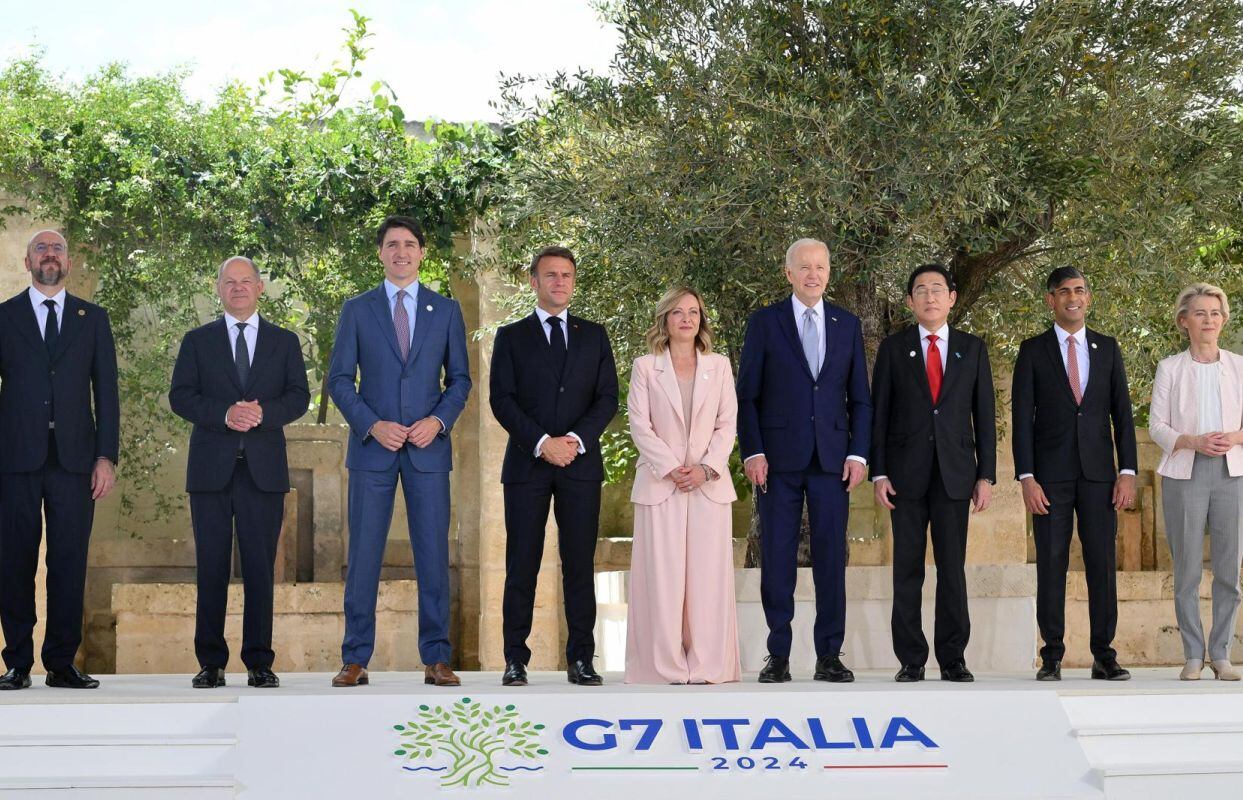
He Group of 7 reached a provisional agreement this Thursday to grant a loan to Ukraine of about 46 billion euros that will be financed with the interests generated by Russian assets immobilized around the world, most of which are in the European Union (EU). and, especially, in Belgium.
These are the keys to the agreement that will be officially announced in the next few hours at the G7 summit in Apulia (southern Italy):
Why are assets from Russia used?
When Russia invaded Ukraine in February 2022, USAthe EU and its allies tied up 260 billion euros of Russian central bank funds around the world, most of which are in financial institutions in Europe and, especially, in the Euroclear securities depository in Belgium.
Faced with Ukraine’s growing financial needs, the G7 argues that the country’s reconstruction and the purchase of weapons, among other needs, can be financed with the profits generated by Russian assets while they are tied up in different banks.
Why not give Ukraine the Russian assets directly?
For months, G7 negotiators have debated the legality of seizing the money and sending it to Ukraine.
The conclusion they have reached is that, although the Kremlin cannot access the assets because they are frozen, they still belong to the Russian central bank. However, the profits generated by that money have no owner, so they could be given to Ukraine, something with which Moscow does not agree.
The 260 billion euros of frozen Russian assets generate about 3 billion euros in profits annually, but that amount is insufficient to keep Kiev afloat, since it would only cover the financing needs of the Ukrainian Executive for one month.
Therefore, the G7 has decided to use future interest as collateral for a loan that will provide Ukraine with a substantially larger sum, of at least 46 billion euros, so that it can rebuild its country and buy more weapons.
Who will put up the money?
The United States will be the largest contributor, although it has opened the door for other G7 partners or other countries allied with Ukraine to contribute to the fund, named “Extraordinary Revenue Acceleration (EPA) Loans for Ukraine”.
Only the United States is willing to contribute the 46 billion euros (US$50 billion), a senior American official told the press, insisting that the idea is to create a “loan syndicate” with contributions from other countries with the aim of “share the risk”.
When will Ukraine be able to access the funds?
The aforementioned official indicated that the US Government could disburse the 46 billion euros this year because it can do so legally in accordance with internal legislation, and explained that other countries will have to decide when they can do so according to their regulations.
Washington wants to accelerate the entry of funds to Ukraine, not only for kyiv’s needs, but for the November elections, in which US President Joe Biden will face former President Donald Trump (2017-2021).
Who is responsible for the loan?
One of the main points of contention in the negotiations has been who would be ultimately responsible for the loan, should the war end without sufficient interest having been generated on Russian assets to pay it off.
According to the US official, the leaders of the G7 have pledged that Russia’s assets will remain frozen until the Kremlin pays for the damage caused in Ukrainewhich according to the World Bank exceeds 450,000 million euros.
That way, there are two options: or Russia pay for the damage caused when the war ends – something that the Kremlin will hardly agree to – or the assets will remain frozen until they generate enough profits to pay for the loan, according to the aforementioned official.
The political reality is more complicated, because the 27 members of the EU have to vote unanimously every six months to renew the sanctions that freeze Russian funds and Hungary – Moscow’s main ally in the EU – could vote against , dismantling everything.
Which are the next steps?
Therefore, to guarantee that the loan goes ahead, the first thing will be for the EU to support this G7 pact, renewing the sanctions regime on Russia, the aforementioned US official explained.
Subsequently, the necessary contracts will be drawn up between the lenders (the United States and others), Ukraine as a recipient and the intermediary organizations, and then a disbursement schedule will be agreed to ensure that Ukraine’s needs can be met.
Source: Gestion
Ricardo is a renowned author and journalist, known for his exceptional writing on top-news stories. He currently works as a writer at the 247 News Agency, where he is known for his ability to deliver breaking news and insightful analysis on the most pressing issues of the day.












